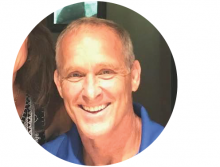
Konnichiwa!
I have been a lifelong advocate of physical fitness. I played (yes played) Judo since I was 10 years old and competed extensively culminating with a second place finish in the Junior Olympic Nationals at 18 years old. Having wrestled in high school and, then, in college at a Division I school, physical fitness is well engrained in my bones.
Since college, I have played Judo for the entire time except for five years. That five year period ended last year when I returned to my Judo roots. I started to work out for Judo once again. There is nothing to challenge your physical conditioning like Mano a Mano.
While I have never stopped focusing on keeping physically fit by continuing my running, biking, lifting and exercising, I recently had to pause my workouts as a result of a necessary procedure. Pausing my workouts for eight weeks was difficult for me to say the least. But I am now back in the game and moving forward.
As we age, it is important to modify workouts to accommodate aging. Yes, we all age, but it is better than the alternative! More stretching, less beating on myself and more focus on smarter conditioning methodologies are essential at this point. As my cherished, deceased Sensei, Mr. Charles Cavrich, used to say, “A rock that stands firm in a river is eroded by the current, whereas as a leaf that follows with the current, continues to move forward.”
That being said, my Sensei had the team engaged in stretching, isometrics, calisthenics and weight lifting as critical parts of the equation to enhance our prowess on the tatami. While these physical training methods never can or will eclipse randori to build functional judo skills, they are an essential component of preparation.
Sometimes, as men, we overdo weight training and injuries are the inevitable result. This happens no matter what age we are. So now I’m going back to my roots and working smarter with more stretching, isometrics and calisthenics while reducing excessive weight training.
I recently read a book called “Progressive Calisthenics”. The focus of the book is to apply smarter techniques to build physical capacity at a much higher level. All the work can be done in limited amount of time with little equipment. Thus, I am starting on a journey to follow the author’s path and expect my conditioning will be much better than it has been in a long time. Funny thing is much of the book’s content was advocated and applied by my Sensei over 40 years ago.
During my research of the book on the internet, I came across a Sports Illustrated article written by John F. Kennedy in 1960 called “Soft America”. The article was interesting and Kennedy was pubescent in his evaluation of America’s future without a significant change being pursued. He expressed concern about the lack of conditioning of America’s population. Roll the calendar forward to today and much of America’s population is suffering from lack of physical activity since modern life is very sedentary. Judo and my Sensei taught me many lessons, but one of the most important is that the mind and body are inextricably intertwined.
I have attached the article from Sports Illustrated; it is a good read and the subject is even more critical with today’s sedentary lifestyle than when the article was written in 1960!
Domo arigato.

